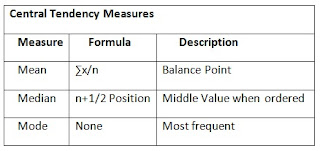- Home
- About Us
- Services
- Online Assignment Help
- Auditing Assignment Help Service
- Nursing Assignment Help
- Excel Assignment Help
- Advanced Economics Homework Help
- XML Assignment Help
- Strategic Management Assignment Help
- Logarithm Assignment Help
- Probability Assignment Help
- Matrices Assignment Help
- Commercial Bank Management
- Thesis Proposal Help
- Corporate Strategy
- Electrical Engineering
- Civil engineering
- Mechanical Engineering
- Electronics Engineering
- Financial Plan Development
- Research Paper
- Political Science Assignment Help
- Operations Management Assignment Help
- Computer Vision Assignment Help
- Commercial Bank Management
- IT Security Assignment Help
- College Essay Help
- Term Paper Help
- Medical Science Assignment Help
- Nursing Thesis Writing Help
- Religion
- Thesis Help
- Supply Chain Management Assignment Help
- Australia Assignment Help
- Cause and Effect Essay
- International Finance Assignment Help
- Statistics Assignment Help
- Computer Science
- Information Technology
- Bioinformatics Assignment Help
- Biostatistics Assignment Help
- Excel Assignment Help
- Taxation
- Research Proposal Help
- SAASU Assignment Help
- Auditing Assignment Help Service
- Workplace Learning in Finance
- Dissertation & Homework Help
- Custom Essay Writing Help
- Online Assignment Help
- Reviews
- Tutors
Understanding Electrical Networks in Electrical Engineering
Electrical circuits may consist of one or more sources of energy and number of electrical parameters, connected in different ways. The different electrical parameters or elements are resistors, capacitors and inductors. The combination of such elements along with various sources of energy gives rise to complicated electrical circuits, generally referred to as electrical networks. The terms circuit and network are used synonymously in the electrical literature. The dc circuits consist of only resistances and dc sources of energy. And the circuit analysis means to find a current through or voltage across any branch of the circuit.
What is a network?
Any arrangement of the various electrical energy sources along with the different circuit elements is called an electrical network.
Network Element
Any individual circuit element with two terminals which can be connected to other circuit element is called a network element.
Network elements can be either active elements or passive elements. Active elements are the elements which supply power or energy to the network. Voltage source and current source are the examples of active elements. Passive elements are the elements which either store energy or dissipate energy in the form of heat. Resistor, inductor and capacitor are the three basic passive elements. Inductors and capacitors can store energy and resistors dissipate energy in the form of heat.
Branch
A part of the network which connects the various parts of the network with one another is called a branch. A branch may consist of more than one element.
Junction point
A point where three or more branches meet is called a junction point.
Node
A point at which two or more elements are joined together is called a node. The junction points are also the nodes of the network.
Mesh or loop
Mesh or a loop is a set of branches forming a closed path in a network in such a way that if one branch is removed then the remaining branches do not form a closed path. A loop also can be defined as a closed path which originates from a particular node, terminating at the same node, travelling through various other nodes, without travelling through any node twice.
Classification of networks
The behavior of the entire network depends on the behavior and characteristics of the elements. Based on such characteristics electrical networks can be classified as
Linear Network: A circuit or network whose parameters ie elements like resistances, inductances and capacitances are always constant irrespective of the change in time, voltage and temperature, etc is known as linear network. The Ohm’s law can be applied to such a network.
Nonlinear network: A circuit whose parameters change their values with change in time, temperature, voltage, etc is known as non-linear network. The Ohm’s law may not be applied to such network. Such network does not follow the law of superposition. The response of the various elements is not linear with respect to their excitation. The best example is a circuit consisting of a diode where diode current does not vary linearly with the voltage applied to it.
Bilateral network: A circuit whose characteristics, behavior is same irrespective of the direction of current through various elements of it, is called bilateral network. Network consisting only resistances is good example of bilateral network.
Unilateral Network: A circuit whose operation, behavior is dependent on the direction of the current through various elements is called unilateral network. Circuit consisting diodes, which allows flow of current only in one direction is good example of unilateral circuit.
Active network: A circuit which contains at least one source of energy is called active. An energy source may be a voltage or current source.
Passive networks: A circuit which contains no energy source is called passive circuit.
Lumped network: A network in which all the network elements are physically separable is known as lumped network.
Distributed network: A network in which the circuit elements like resistance, inductance, etc cannot be physically separable for analysis purposes, is called distributed network. The best example of such a network is a transmission line where resistance, inductance, and capacitance of transmission line are distributed all along its length and cannot be shown as separate elements anywhere in the circuit.
For more details you can visit our websites at https://www.helpwithassignment.com/electrical-engineering-help and http://www.helpwiththesis.com
We deliver a well-researched academic paper tailored to your specifications at a fair price while ensuring timely delivery. Our service is known for providing top-scoring, plagiarism-free research papers. Additionally, we offer unlimited revisions and 24/7 customer support as part of our commitment to quality.
So, don’t hesitate—place your order today and receive expert academic assistance instantly!




